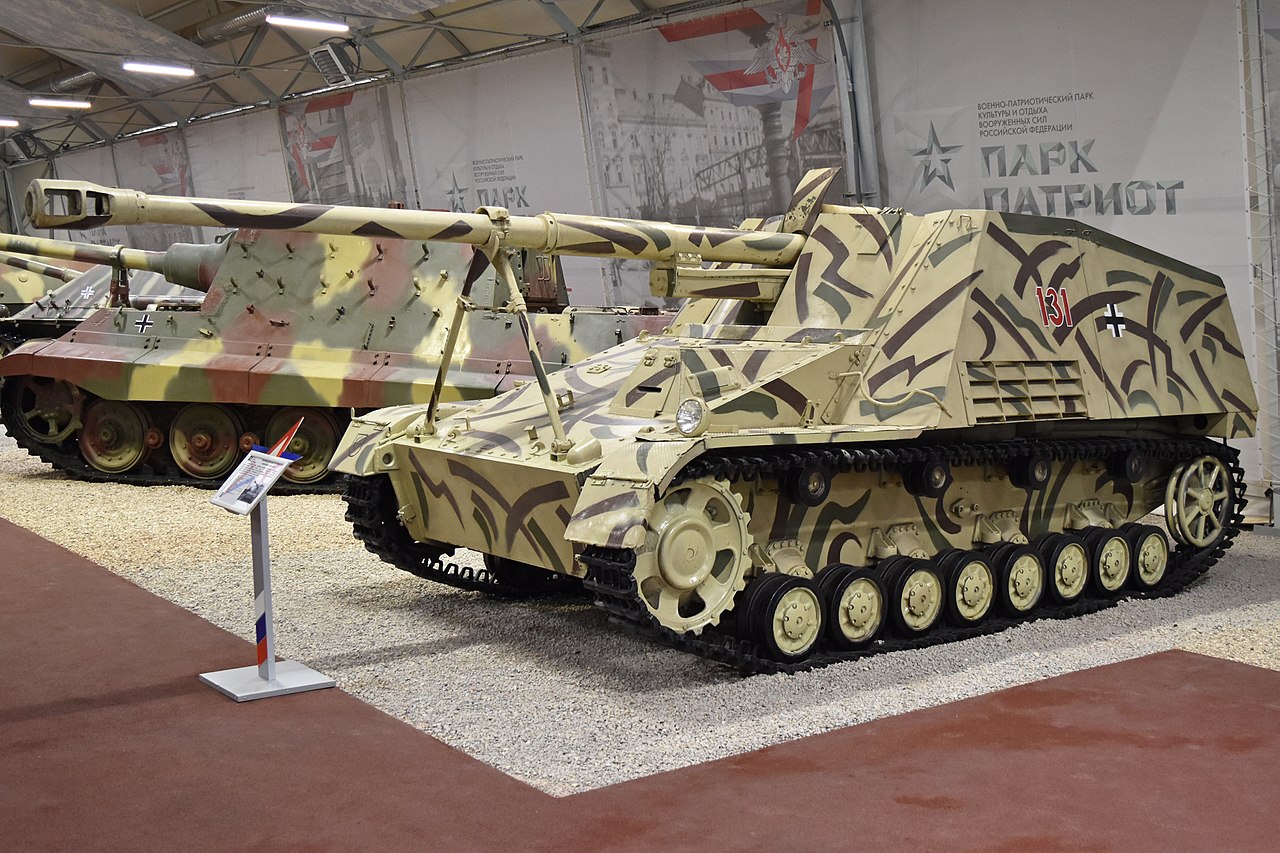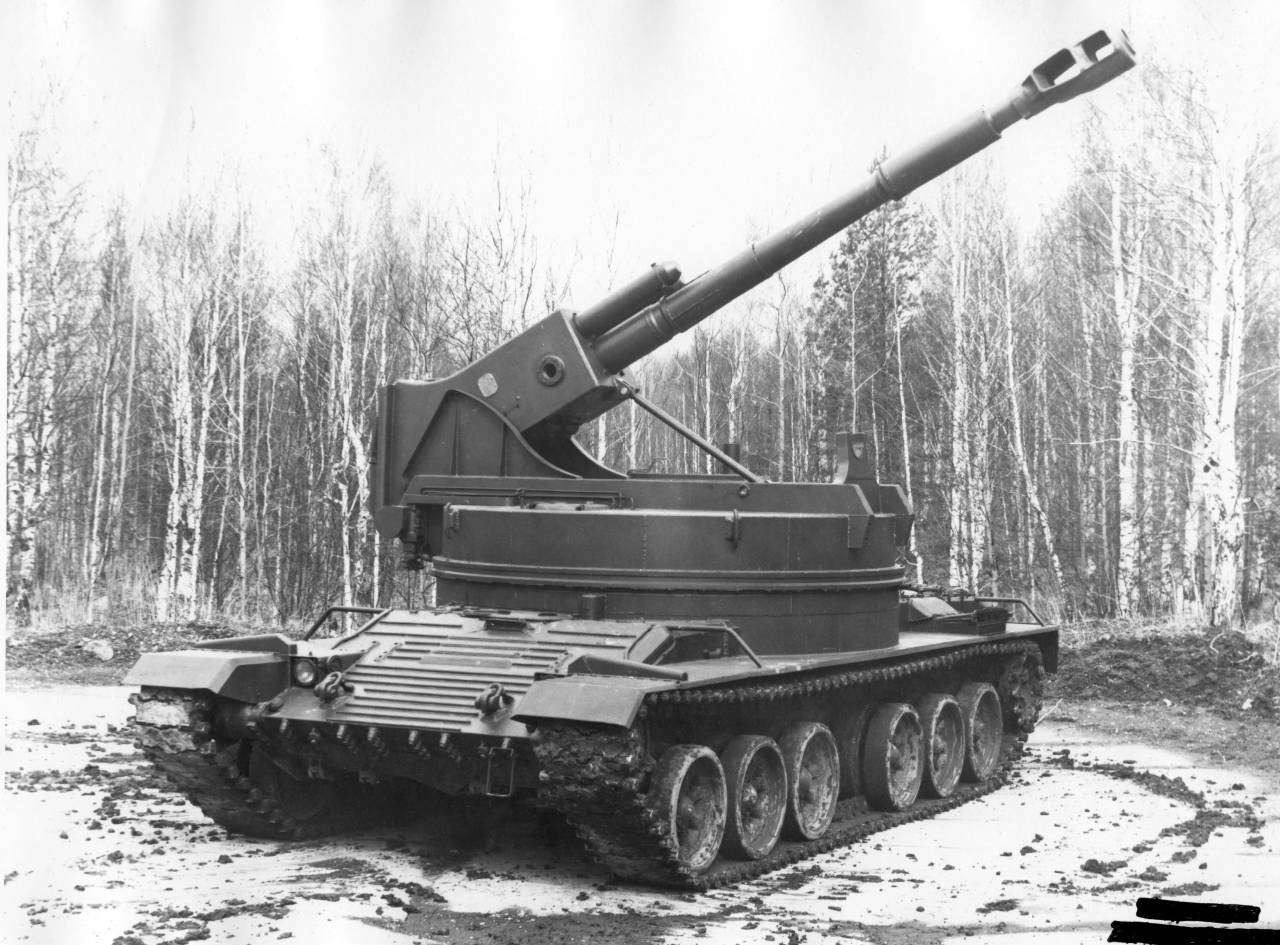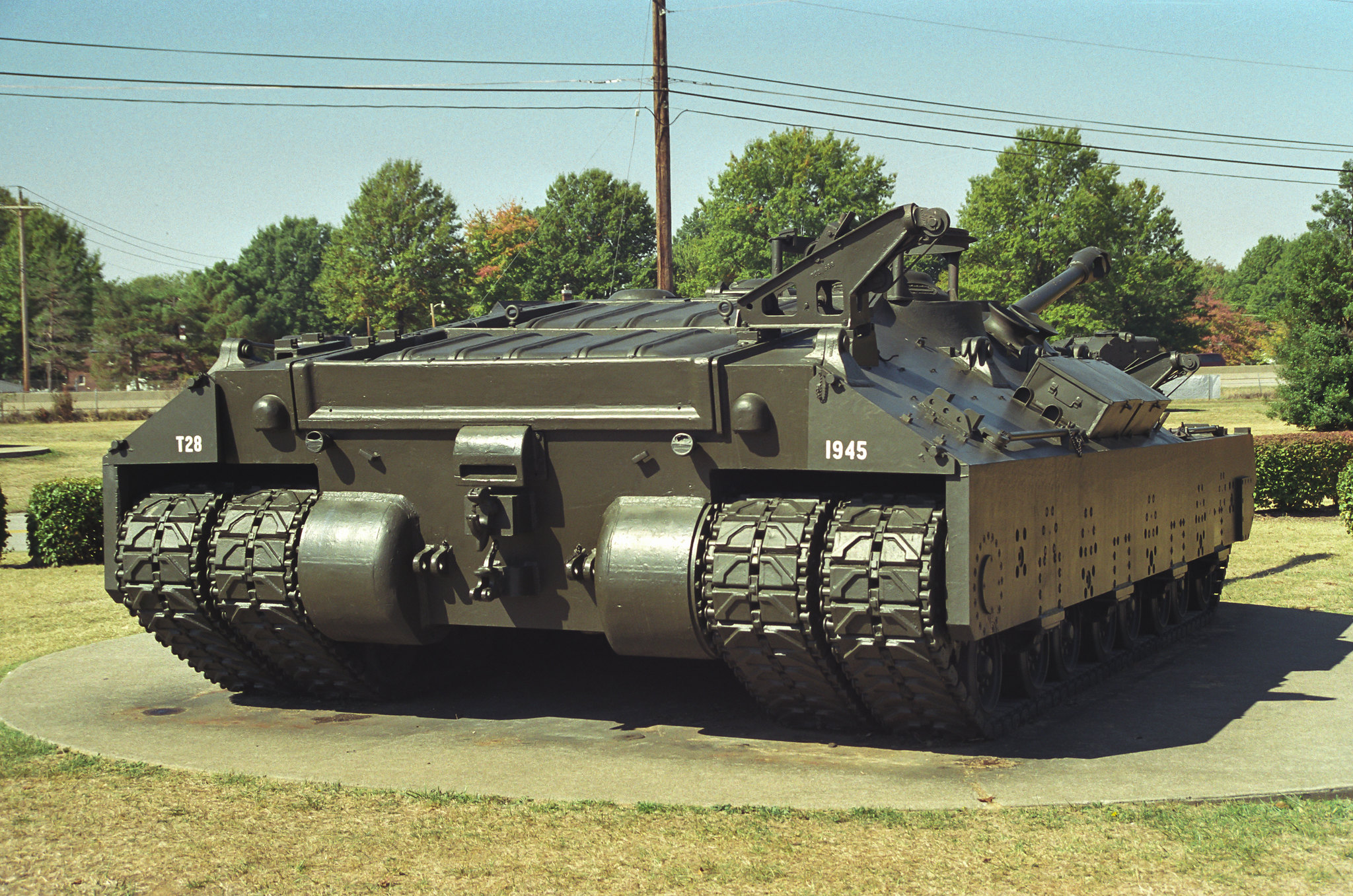Alongside the T-34, the KV-1 heavy tank is a symbol of the Soviet Union’s triumph over Germany during the Second World War. The tank was an absolute beast, weighing 50 tons it was impervious to most anti-tank guns when it was introduced and could knock out any German tank in service at the time.
However in direct contrast to its statistical greatness, the KV-1 was a complete dog to operate; its crew were essentially blind, had too many jobs to do and the poor driver had to perform a powerlifting class just to drive it.
However, properly utilised the KV-1 could be a real handful for the Germans, as is shown by a single KV-1 holding up elements of an entire Panzer division for nearly two days during the initial stages of Operation Barbarossa.
Contents
Development
The origins of the KV-1 are almost as fascinating as the tank itself. Although it is often seen as an original design, the KV-1 was actually a refined, simplified version of one of the USSR’s most absurd tanks, the SMK.
This 60-ton beast was designed in the 1930s at the Kirov Plant in Leningrad. The SMK had two turrets; the largest of which contained a 76 mm gun, while the smaller one contained a 45 mm gun. It competed against a very similar vehicle built by the Bolshevik Factory, the T-100.
Both had a crew of seven and were enormously long vehicles, a proportion necessary to accommodate the two turrets.
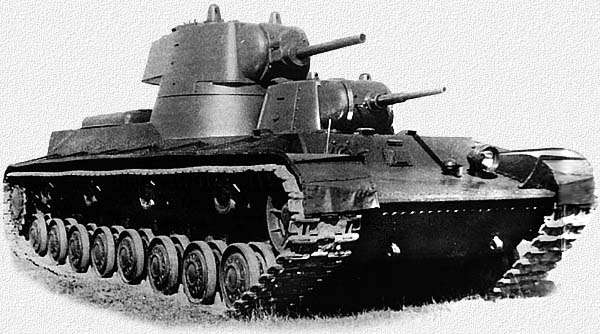
They were constructed to replace the five-turreted T-35 heavy tank, but designers already knew that multi-turreted vehicles on this scale were not very effective. The commander quickly became overworked, and the tank was made much heavier, without a gain in armor.
The SMK’s design team independently designed a single-turreted version of the tank, which was smaller in size and weighed 8 tons less. As a result of the down-scaling, the designers were able to add more armor. It was named the KV, after Soviet Marshal Kliment Voroshilov.
The SMK, T-100 and KV were shown to Stalin in August 1938, and all designs were approved for construction of prototypes.

They underwent trials in 1939, where the SMK and T-100 quickly showed that their multi-turret design was impractical as the commander was completely overloaded. In addition, their great size and weight meant they were slow, unmanoeuvrable and prone to bogging down.
Ironically the KV side-project actually turned out to be the best among the three. But the trials were not over yet, as they were then sent into combat in 1939 for live-testing against the Finns in the Winter War, which was going rather terribly for the Soviets.
They were assembled into a special armored brigade commanded by Voroshilov’s adopted son. Once again the larger SMK and T-100 performed poorly, with the SMK actually being temporarily lost after driving over a mine – it was so heavy that it could not be recovered until the area was cleared later on.
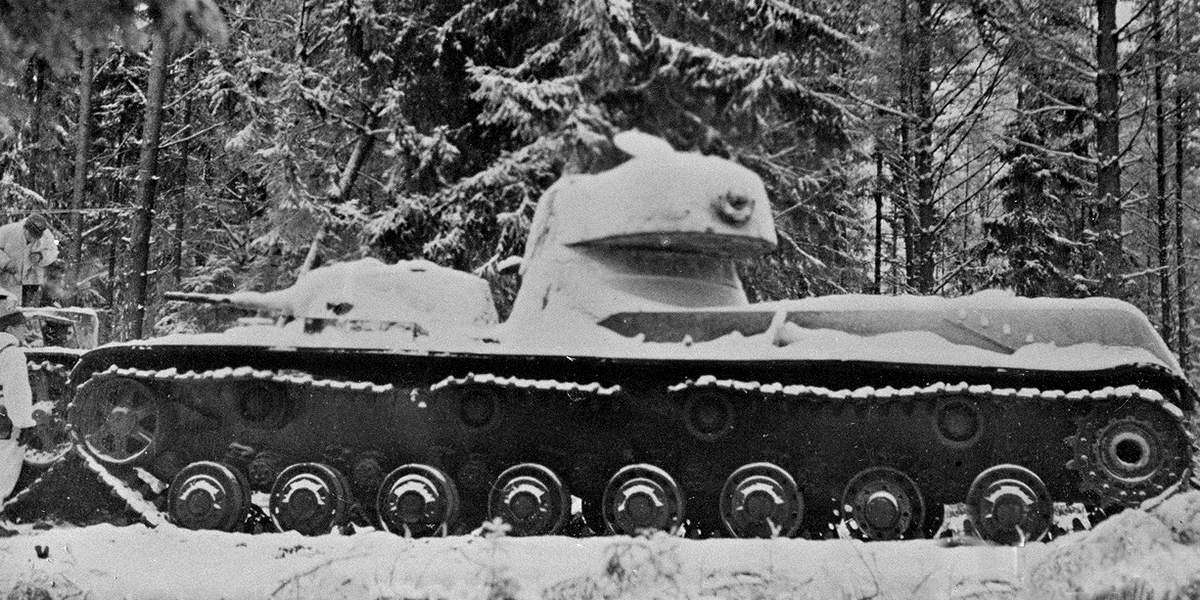
The KV was accepted into production in December 1939. For the SMK though, this was the end of the road. It was scrapped in 1940.
Meanwhile, the T-100 as a tank also came to an end, but its chassis lived on in a few projects aimed at providing heavy fire support against fortifications. This would result in the SU-100Y, a casemate vehicle armed with a 130 mm gun, built onto the chassis of the T-100 prototype.
You can read about that vehicle here.
None of these would be successful though, as a version of the KV-1 carrying a 152 mm howitzer, the KV-2, was deemed better.
The KV-1’s Design
The KV-1 was a true heavy tank, one of only two in production at the start of the Second World War – the other being the French Char B1. It was simply known as the “KV” at first, and only after the procurement of the KV-2 did it receive a retrospective production number, with the name becoming KV-1.
Initially manufactured at the Kirov Plant in Leningrad, major production was shifted to the Chelyabinsk Tractor Plant in the Urals region in 1940. The Kirov Plant also relocated to this site, but residual manufactured components saw nearly 65 KV-1s assembled at Leningrad during the siege from 1941 onwards.

The KV-1 was an innovative yet simple design for its time, with a heavy turret mounting a single large cannon, engine and transmission to the rear of the hull separated from the fighting compartment, and the driver and bow gunner in their own compartment at the front.
The KV-1 was 6.75 metres (22 feet) in length, with a width of 3.3 metres (10 feet) and a height of 2.7 metres (nearly 9 feet).
Read More Black Prince – The Ultimate Churchill Tank
It was very heavily armoured for its time, causing the German Army to struggle during the early part of the invasion to knock out the tank in combat.

With 75 mm (3 inch) on the frontal arc – which included a robust 90 mm (3.5 inch) shielding the gun mantlet – the KV-1 was almost invulnerable to attack from the front in the early part of the war. The sides of the hull and turret were plated with 75 mm (3 inch) of armour, and the rear boasted figures of 70 mm (2.8 inch) of protection.
Even the hull and turret roofs and the bottom of the chassis were sheathed in plate 40 mm (nearly 2 inches) in thickness.
These armor figures are comparable to that of the Tiger I, which would enter production three years later than the KV-1.
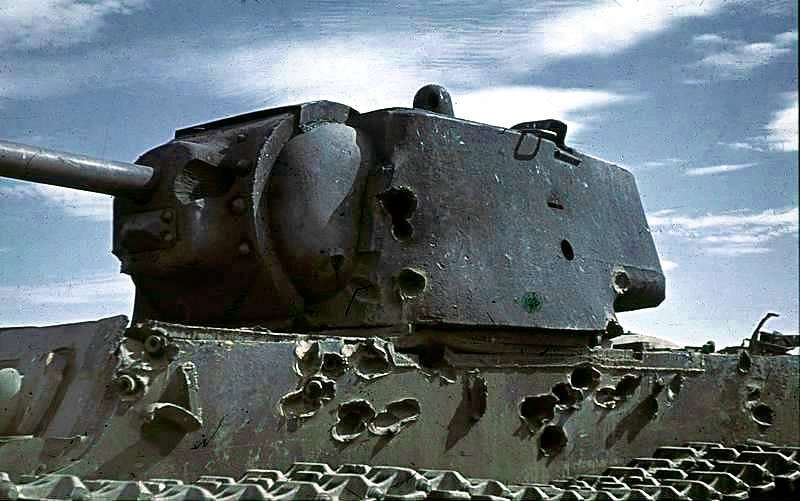
The KV-1 was initially powered by a V-2K V12 diesel engine. This power plant displaced nearly 40 litres in volume, and generated 600 hp at 1,800 rpm. It was the same engine as the V-2 in the T-34, with the “‘K” simply indicating the engine’s configuration when connected to the KV-1’s drivetrain. The top speed of the KV-1 on flat surfaces was 35kmh (22mph), which is actually quite respectable considering the tank’s weight and the time period.
The Kharkov plant that manufactured these engines was forced to re-locate to the Urals region in 1941, and this temporary disruption of supply forced the adoption of a 500 hp, 47 litre M-17 petrol engine to be installed on 130 examples of the KV-1.
However, when the relocated factory had produced sufficient new engines in the Urals, all these petrol-powered examples of the KV-1 were retrofitted with the V-2K diesel power plant, as this stopgap engine had proved unsatisfactory.
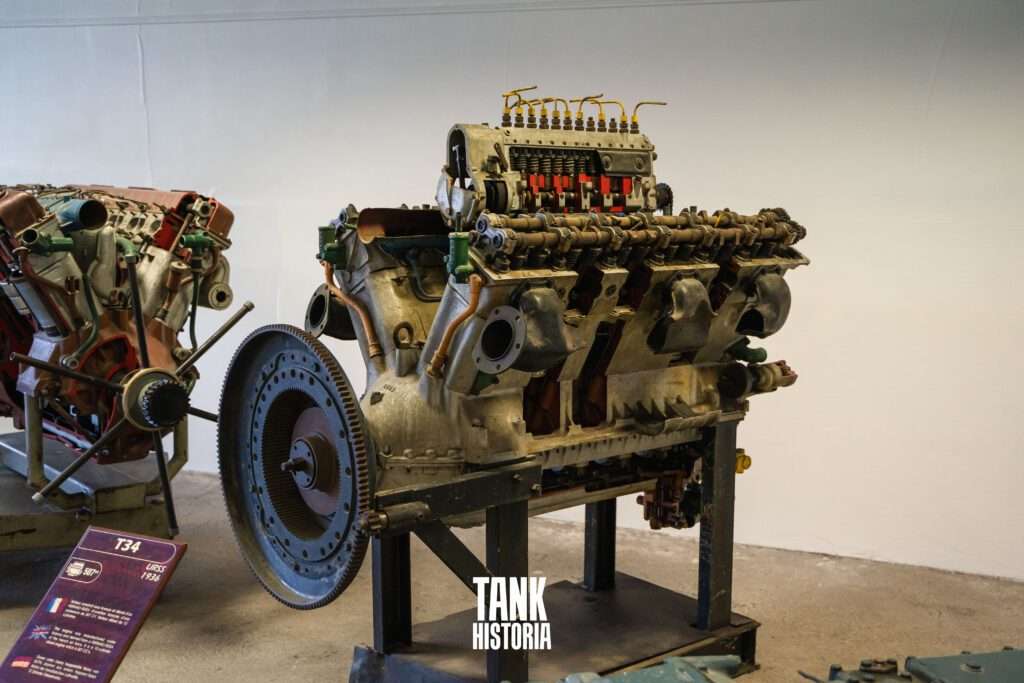
Perhaps the weakest features of the vehicle were its transmission, which was the cause of many complaints by crews operating the tank in combat. Based on a twenty year old Holt-Caterpillar design originally optimised for agricultural tractors, it was a five-speed manual sliding mesh gearbox with a steel-on-steel multi-plate friction clutch.
All transmission controls were mechanical, and required almost superhuman strength to operate; simply shifting gears was exhausting on the driver. Reportedly, sledgehammers and even the radio operator helped the driver out.
These problems were exacerbated later in the war when additional armour was applied to the vehicle without any corresponding increase in engine power, and an already overloaded drive train became more susceptible to mechanical breakdown.

The KV-1’s tracks were 650 mm in width – far wider than German counterparts of the time – to help spread the tank’s heavy weight.
In its original form the KV-1 was armed with the 30.5 caliber L-11 76.2 mm gun, which was not regarded as a very good weapon at the time of its procurement by the Red Army. Before the USSR was even at war they had replaced the L-11 with the 39 caliber F-32 76.2 mm gun.
Read More Vimoutiers Tiger – Left in a Hedge for 30 Years
In 1941 the KV-1 received yet another firepower upgrade, the 41.6 caliber-long ZIS-5 76.2 mm gun. As the tank’s guns were upgraded its ammunition storage declined; from around 116 in the first model, to around 100 when equipped with the ZIS-5.
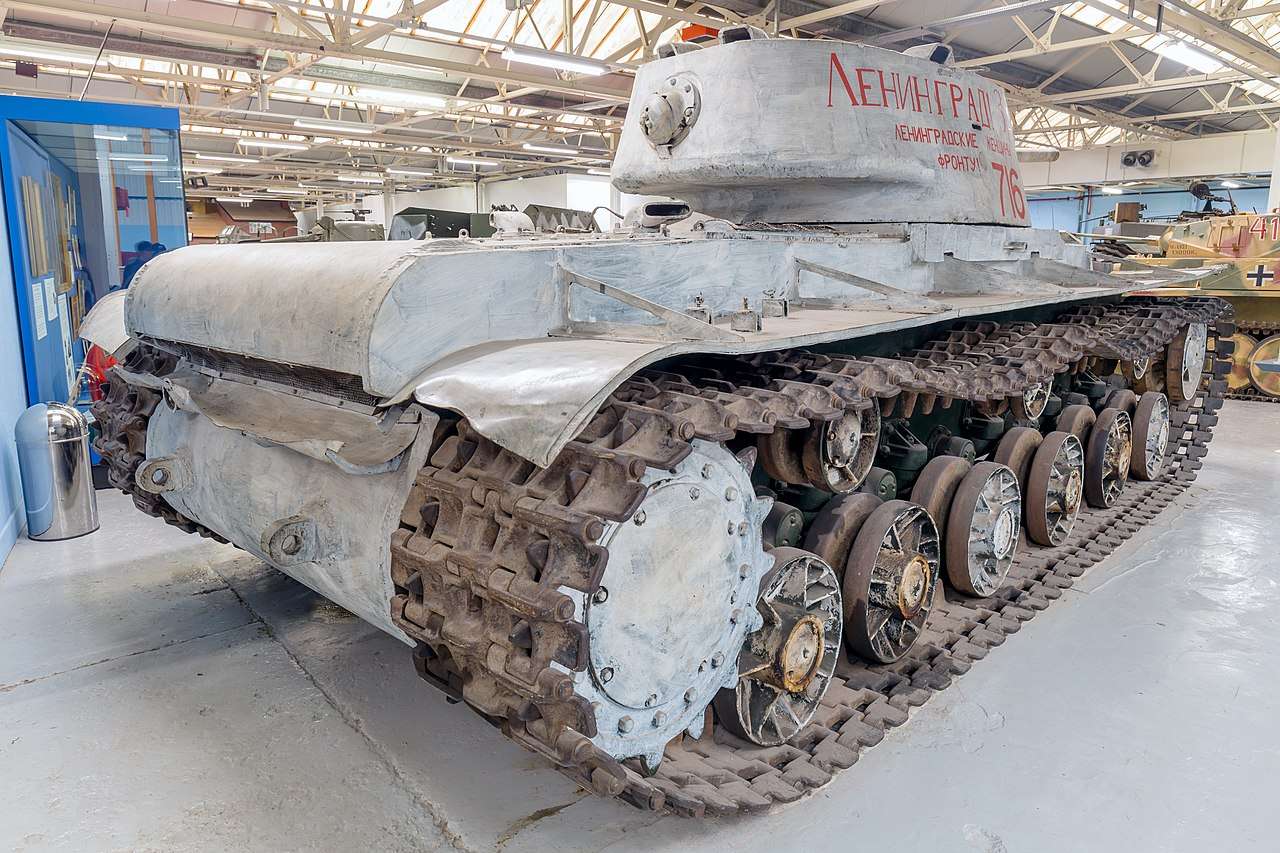
The ZIS-5 was a version of the T-34’s F-34 adapted for use on the KV-1, which caused the rather backwards situation of the Soviets’ medium tank having equal firepower to their heavy tank. This was further exacerbated when the T-34 received an 85 mm gun.
Three DT-29 machine guns chambered in 7.62 x 54mm were also installed on the KV-1. One was mounted alongside the main gun, one was in the front of the hull and used by the radio operator, and one was in the rear of the turret. All the machine guns were able to be removed and used outside the tank if needed.
Unlike the T-34/76, the KV-1 was supplied with a radio, the basic model being upgraded with improved versions during the later service life of the vehicle. An intercom was also installed to facilitate communication between the crew members during combat operations.
However while there is no doubt that as a machine the KV-1 was a great design, the crew had it really bad. There were five members inside the tank; commander, gunner, loader, radio operator and the driver.
The driver was placed in the center of the hull at the front, with the radio operator squeezed in next to him. The turret though was terribly designed, at least in relation to enabling an effective crew. The gunner sat on the gun’s left, while the commander was positioned on the gun’s right, at the front of the turret.
His only dedicated viewing device was a PTK periscope on the roof of the turret, which only provided a small field out of view. Outside of this, he had access to a fixed periscope looking out the top side of the turret, and a vision slit in the turret side armor.

In addition to his role as a commander, he also had to operate and load the coaxial machine gun. On top of all that, he didn’t even have his own hatch.
There was also no turret basket, so the loader had to shuffle round the turret as it turned. The loader was also required to operate the turret’s rear machine gun if needed.
The KV-1 was upgraded to meet new threats, mostly in regard to its armor. Additional armor plating was added on the front and sides of the hull, and additional armor on the turret. This version was known as the KV-1E (“E” for ekranami – meaning “shields”, or “screens”).
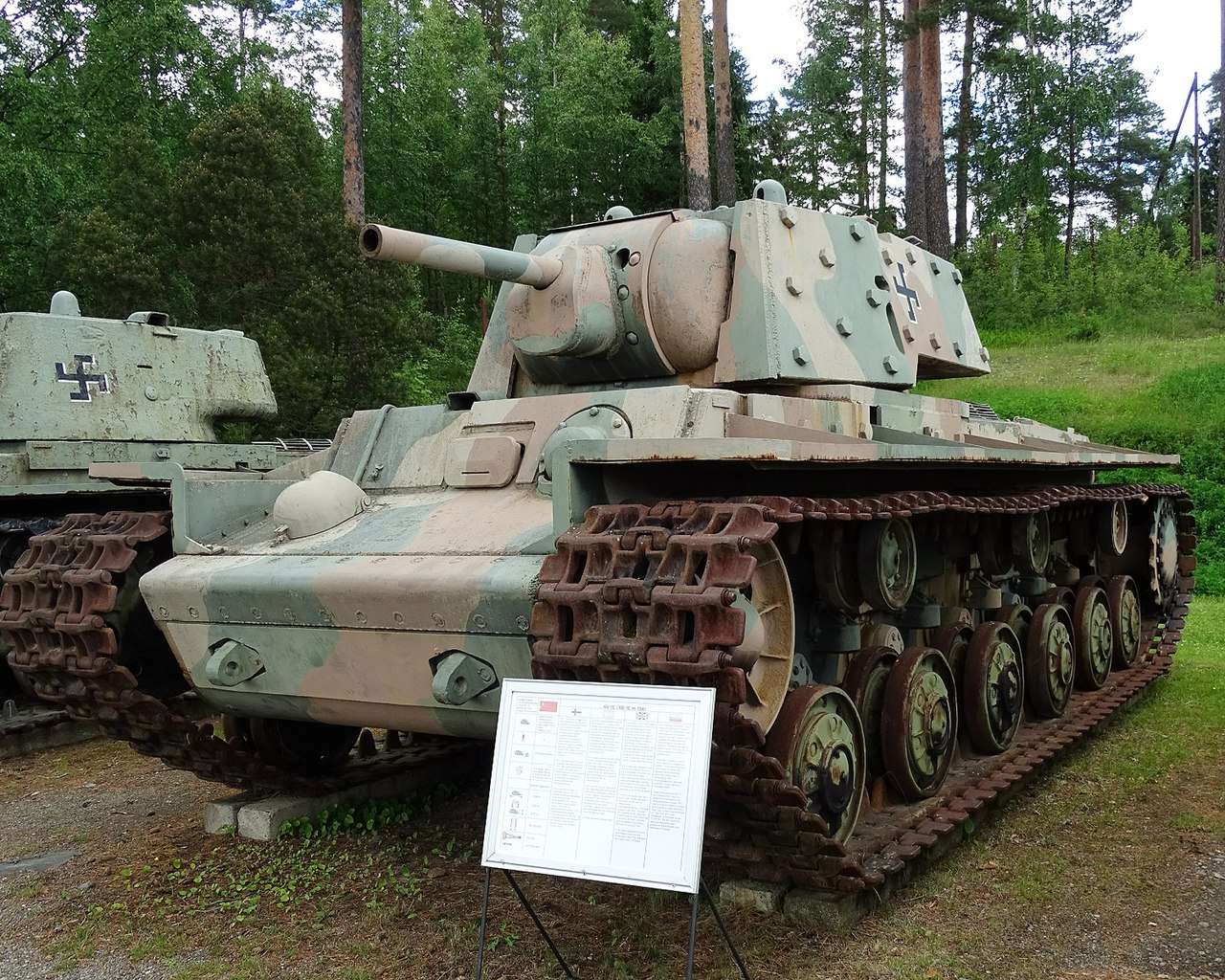
Apart from its many variants and derivatives nearly 3,250 examples were manufactured until production ceased in 1942. While the KV-1 served right up to the end of the war, diminishing numbers after 1943 saw it replaced by the IS-series of heavy tanks, which used the KV-1 as a design baseline.
Service
The KV-1’s most prominent actions were in the early part of the Second World War, when the Wehrmacht invaded the Soviet Union in June 1941. German forces were shocked by initial contact with Soviet armour early in the campaign, with the T-34 well armoured, very mobile and having adequate main armament to deal with the lighter and less well-armed German tanks.
However it was the KV-1’s heavy armour that made it almost invulnerable to German attack, causing problems way out of proportion to the actual number of vehicles employed by the Red Army.
The anti-tank guns employed by Germany at this time were mostly of 37 mm or 50 mm types, which both proved mostly useless in dealing with the thick armour of the KV-1 at normal combat distances, especially from the frontal arc.
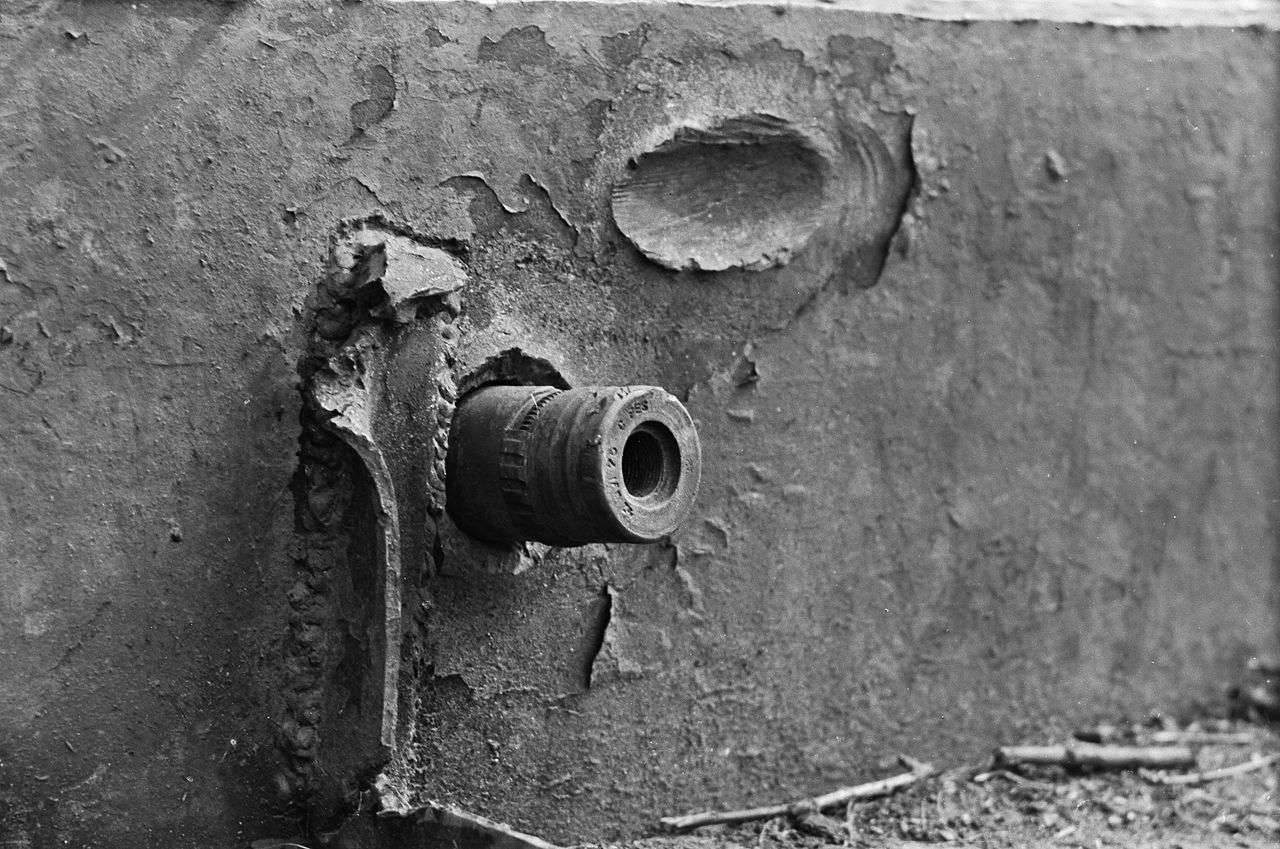
On the other hand, most of the vehicles encountered by KV-1’s were early German tanks with small guns and thin armor. In many instances there was quite literally nothing they could do against a KV-1.
It was only the magnificent 88 mm gun that could reliably deal with the thick armour of the KV-1 at normal combat ranges. The later PaK 40, and its tank-based relative, the KwK 40, were also capable of knocking out the KV-1.
Read More The M103 – America’s Last Heavy Tank
On the 23rd June 1941, a single KV-1 broke through the German front line after attacking and destroying a column of German trucks. This vehicle then sat astride a road being used by the Germans for their advance, causing considerable delays to the advance of the 6th Panzer Division, which was the vanguard of the 4th Panzer Group. Engaged by four 50 mm anti-tank guns, it proved invulnerable to their combined fire and destroyed all four weapons in succession.
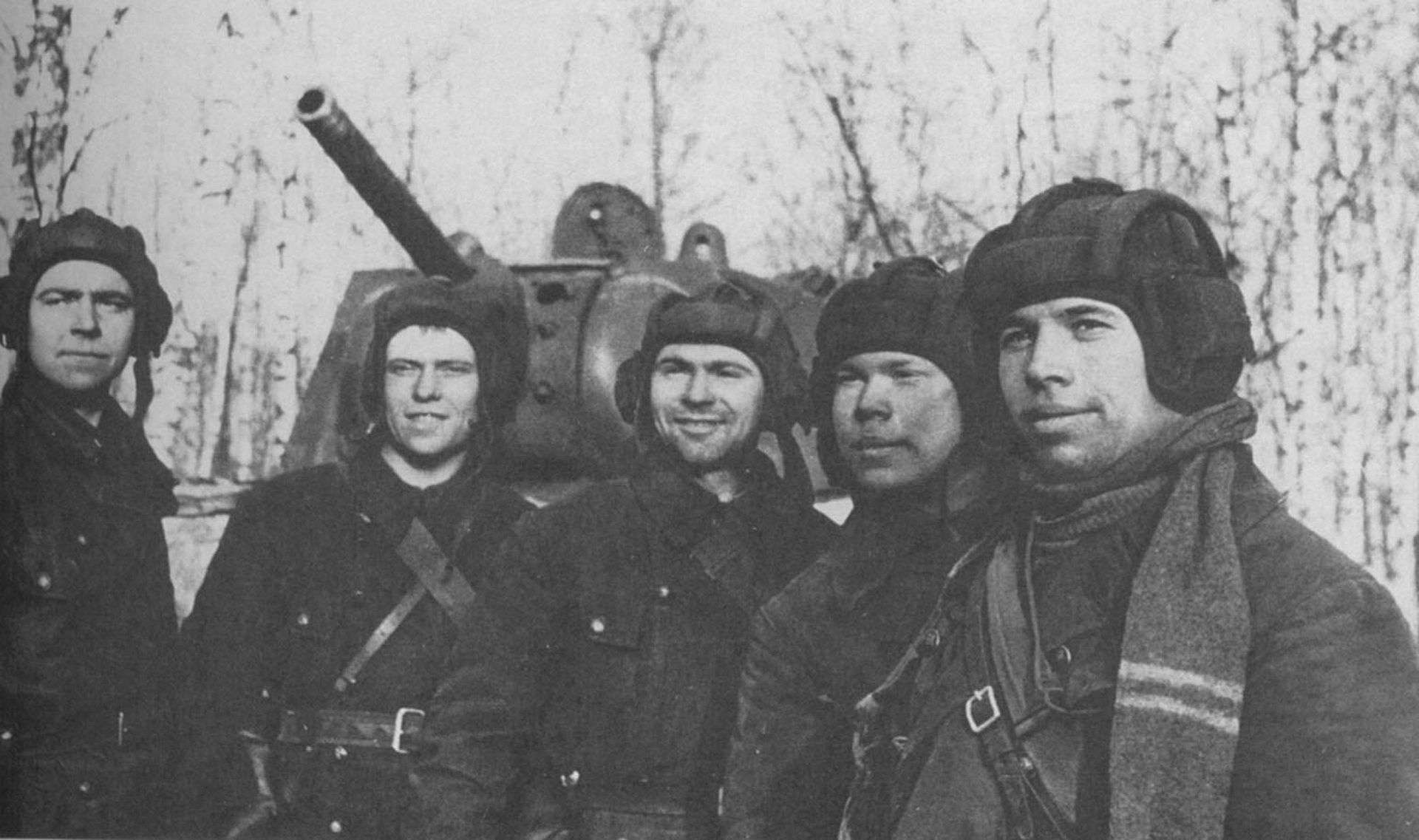
An 88 mm gun was shifted to a position behind the KV-1, but before it could engage it was destroyed by the tank’s main gun. Sapper attacks during the night were equally ineffective, and the assault on this tank was resumed next morning with tanks, 88 mm guns and an infantry assault. Finally the KV-1 was disabled with grenades after absorbing countless hits from anti-tank weapons, and while some accounts state the crew escaped, the German story of this encounter informs us that the brave crew were buried with full military honours.
There are more stories that are similar to this one, and many reports and images of KV-1s covered in dents from enemy rounds.
Despite these successes though, the inherent weaknesses of the KV-1 limited the service life of the platform. The weight of the KV-1 severely limited its mobility, and having no fording kit it was limited to traversing water bodies by bridges only.
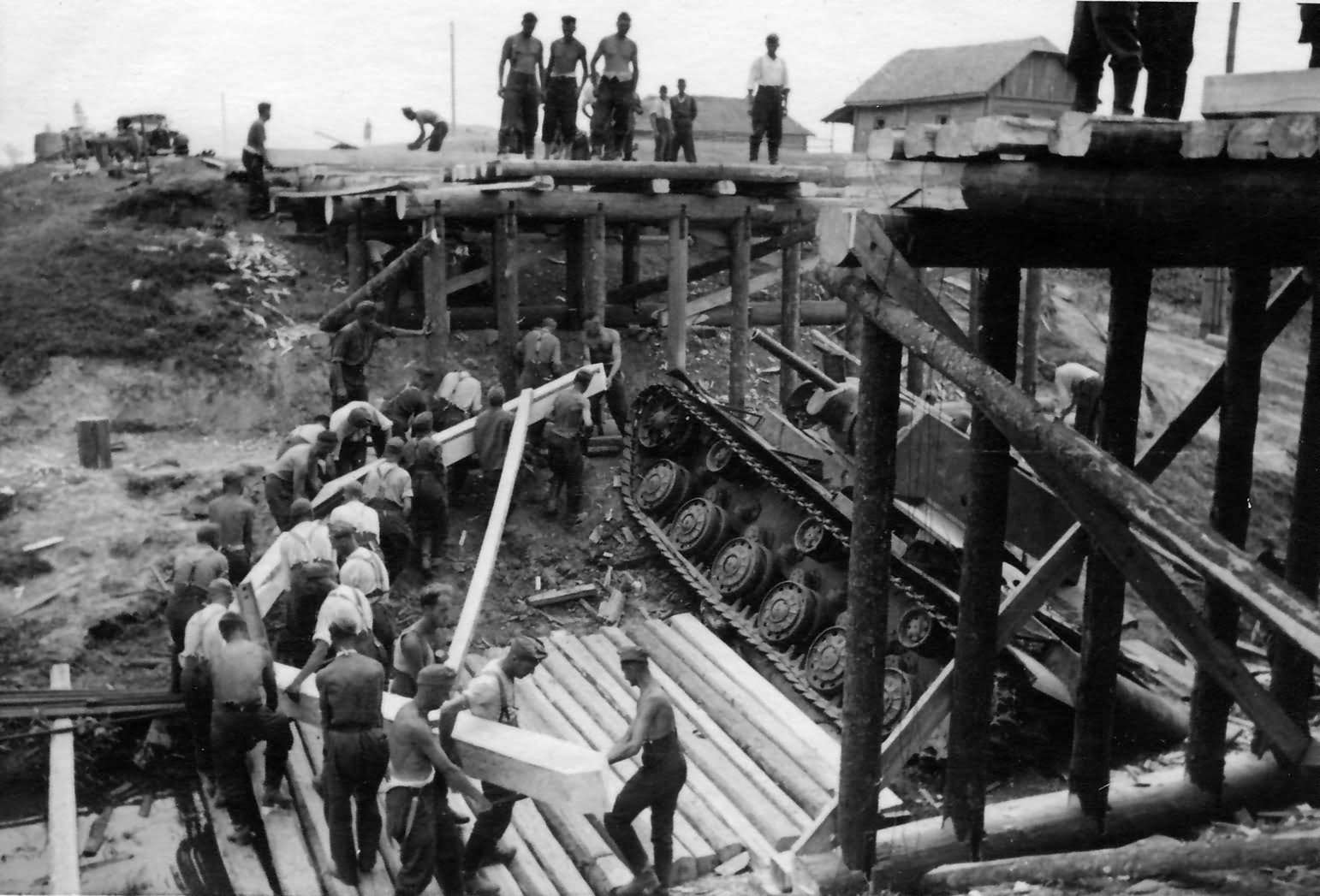
The unreliability of the transmission was also major problem, and when some variants were provided with enhanced armour after the increasing effectiveness of German anti-tank weapons became apparent, the increased weight caused additional mechanical issues leading to more breakdowns. Another factor was that the main gun in the KV-1 was identical to that used in the T-34, a platform that was easier and cheaper to manufacture, and far more reliable in service.
But perhaps the greatest flaw of the KV-1 was the crew’s inability to effectively operate it. German reports state that many were seen aimlessly driving around in battle, not responding to the situation nor environment around them. This was likely because the crew were overworked and had terrible situational awareness.
All these issues meant that production of the base KV-1 ceased in 1942, and the up-gunned variants that followed were not seen as a great improvement to the original design. Its last gift to the Red Army was being used as a baseline design for the new IS-series of heavy tanks that were to take the Soviet Union to victory in Berlin in April 1945.
Conclusion
Despite its many flaws, the KV-1 proved a great asset to the Red Army during the desperate early days of Operation Barbarossa. Having adequate fire power, and the incredible toughness of its armour meant that the Wehrmacht fought at a distinct disadvantage in tank-to-tank warfare during 1941 and 1942, and only by employing superior tactics were they able to engage and destroy such formidable opponents.
The KV-1 lived on for decades in later Soviet tanks like the T-10, which were built on a platform pioneered by it.

Many KV-1s adorn plinths in memorials across European Russia, testament to its sterling service in slowing, then stopping the German advance towards Moscow and beyond. While not the best tank of the war, and certainly not the best heavy tank, it was in many ways the right platform at the right time, and the sacrifice of its crews did much to lead to Germany’s eventual defeat.
Read More T-34/100 – Egypt’s Super T-34 with a 100 mm Gun
Operation Barbarossa was an exercise in insanity from the start, and had no real chance of success, but the KV-1 helped ensure that the invasion of the Soviet Union ended in dismal failure, and the total destruction of the Wehrmacht.


